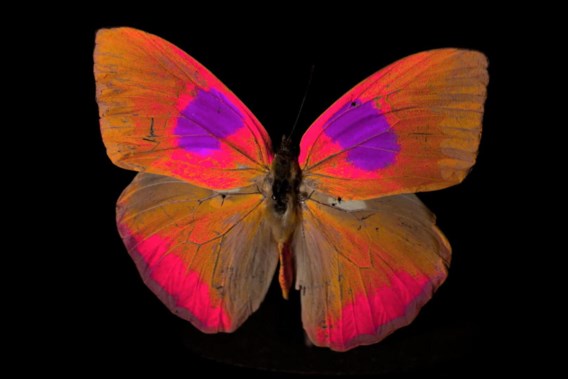How do animals see the world? Certainly different from people. Scientists have tried to capture this in moving images, using their own camera system. Check out some of those images above.
Thursday, January 25, 2024 at 11:40 AM
With the researchers’ camera you can make videos that show the colors that animals’ eyes might perceive. It is the work of British and American scientists, who just published their findings in the journal Plos Biology. They filmed, among other things, how a bee sees a caterpillar and a spider in close-up.
Animals perceive their environment differently because the light-sensitive cells (photoreceptors) in their eyes are different. For example, honey bees, like some birds, reptiles and fish, can see ultraviolet light (UV), but humans cannot. The new dual camera simultaneously records video in four color channels (blue, green, red and UV). The images are constructed based on knowledge about the photoreceptors in the animal’s eyes.
The scientists had to develop their own camera system and associated software because common methods such as spectrophotometry are too time-consuming and require specific lighting conditions. They also cannot capture moving images. According to the researchers, the color accuracy with their system is at least 92 percent. They tested this by comparing the result with that of traditional spectrophotometry.
Their portable system is built from commercially available cameras and the software is freely available. So other users can get started with it straight away.
With their attempt to reconstruct animal vision, the researchers hope to better understand how animals communicate with each other and navigate through the world. Moving images are crucial because they say more about how animals find a partner or prey. The images could contribute to the design of bird-friendly windows and to limit the impact of light pollution on insects.


